JRDG Company Special – Model 501
Model 501 (approx 2002-2012)
Retail price in 2007 in Germany 4.698 euro per amp
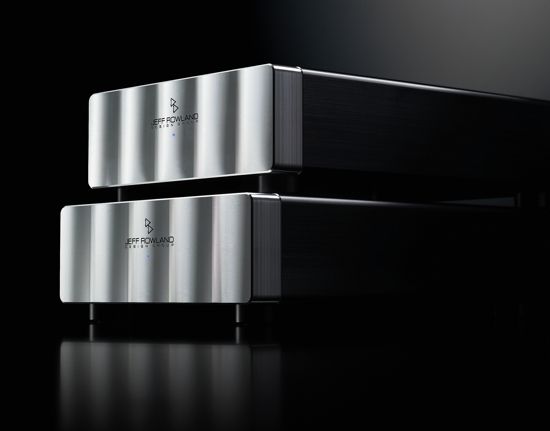
Model 501 looks similar to the Model 201 but is slightly larger in all dimensions. The 501 is a bigger version of the 201, utilizing a higher powered 500ASP ICE-power module. As far as I know there is no difference with the 201’s except that a higher-powered version of the ICE module is used. I haven’t listened to it but I hear from friends that it indeedsounds more powerful than the 201 but may also sound a little more technical. But this is hearsay, not a fact.
Class AB versus Class D (link to be added)
Model 501 Inside Pics
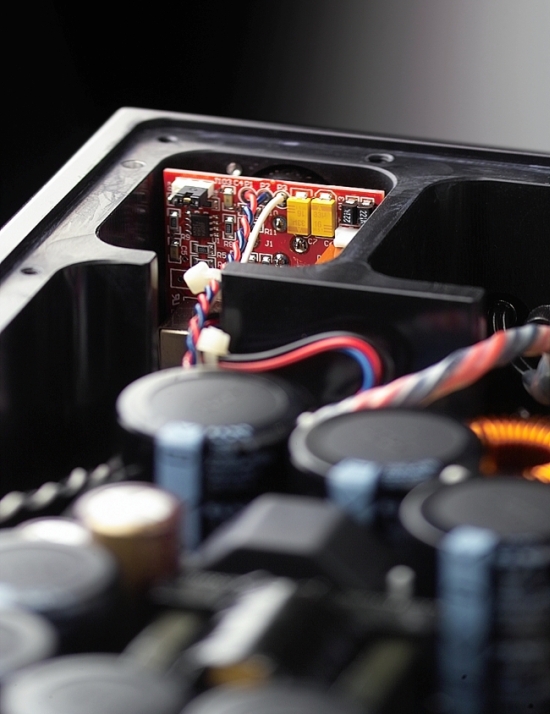
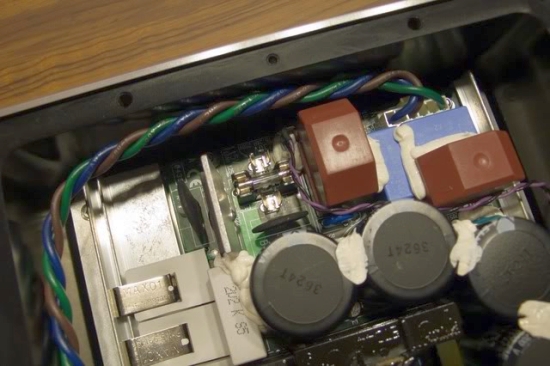
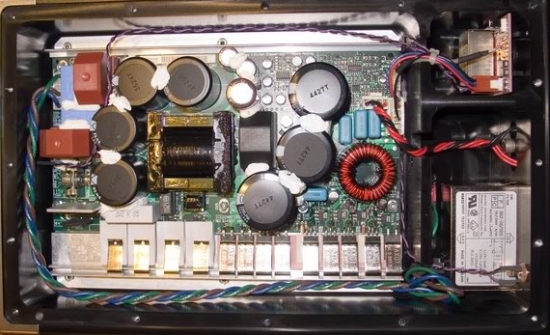
Model 501 Gain Settings
Below descriptions indicate model 201, but they also apply to model 501.
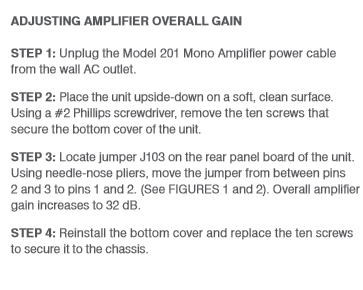
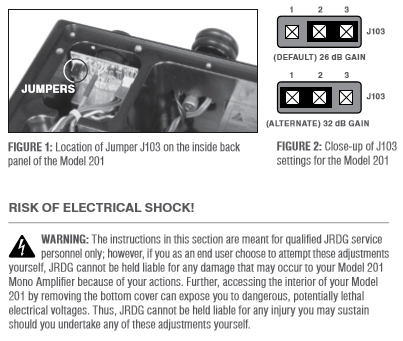
Model 501 Features
XLR input connector for balanced system configurations. Same gain and input impedance characteristics are ensured whether XLR or RCA adapted inputs are used.
Transformer coupled input provides universal compatibility with other components and eliminates ground loop noise and EMI.
High efficiency ICEpower® power conversion technology generates high output power with very little heat, promotes long component life and permits a relatively small physical size.
Multistage AC line filtering in power supply reduces AC line noise pollution throughout amplifier signal circuitry.
CE approved speaker output terminals require no tools for secure, low resistance connections.
Fully-balanced topology implemented in both input and output circuitry.
Proprietary switch-mode power supply technology ensures consistent performance under all operating and AC line conditions.
Low power consumption permits constant power-up operation to eliminate warm-up time.
Selectable overall gain of 26 or 32 dB.
Ultra-low resonance, structurally rigid chassis, precision-machined from a solid block of aircraft grade 6061-T6 aluminum.
Remote ON/OFF input jack allows amplifier standby operation from a remote source for inclusion into home theater (A/V) systems.
Model 501 Specifications
Output Power, Continuous RMS
500 watts @ 8 ohms,
1000 watts @ 4 ohms
Frequency Response
5 Hz – 45 kHz, -3 dB @ 8 ohms
Peak Output Current
40 amps
Dynamic Range
120 dBa
Load Impedance Range
2 ohms – 16 ohms Input Impedance 40k ohms
THD + Noise, 0.1 watts – 500 watts, 4 ohms
< 0.1%, Typically .01% @ 1 kHz CCIF Intermodulation Distortion, 19/20 kHz < .002%
Damping Factor
@ 1 kHz > 1000
Overall Gain (Balanced or Unbalanced)
Selectable Internal Jumper, 26 or 32 dB
Common Mode Rejection Ratio
> 90 dB, 20 Hz – 20 kHz
Absolute Phase
Non-inverting, Pin 2 Positive
Inputs
1 Balanced (XLR) (Unbalanced operation requires an optional XLR to RCA adapter)
Outputs
1 CE-Approved Speaker Wire Clamp
Power Consumption
Idle – 15 watts,
Maximum – 1300 watts
Amplifier Weight
17 lbs. / 7.8 kg
Overall Amplifier Dimensions (H) x (W) x (D)
3.3” x 8.4” x 14.6”
85mm x 213mm x 372mm
More Jeff Rowland
Jeff Rowland Company Special Main Page
Jeff Rowland Company Special Power Amplifiers
Class AB vs Class D – Model 525 compared to Model 201, Model 10 and Model 6
Trends TA-10.2, Wadia 151, Jeff Rowland 102 and OEM ICE Power module compared
Sweet amps for sure…in 2007 they were state of the art. But a dozen years later the tech has moved on, seriously.
Indeed, the ICE technology was very competitive when first issues but these days there are better amplification modules. Rowland 525 with Pascal is considerably better than the 201 in many ways but more technical than you may be used to from classic Rowland gear. 535, I am told, is much improved over the 525. And, of course, there is plenty of competition in the Class D market now.